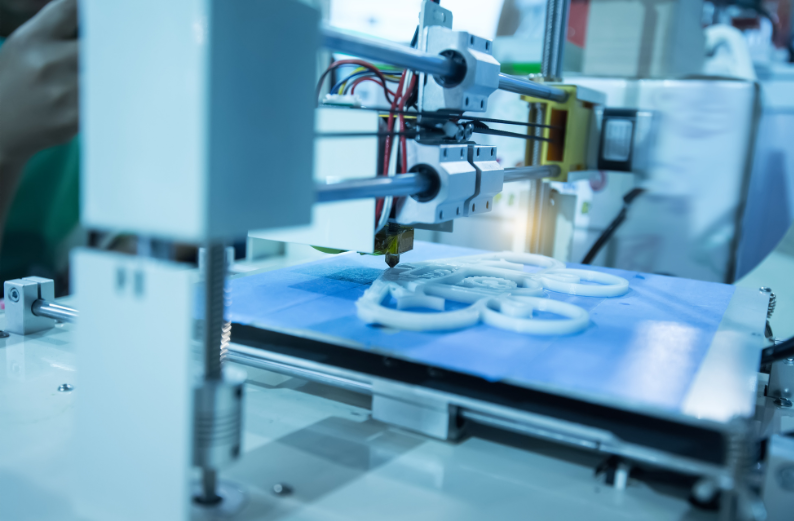Introduction
Channel News Asia quoted the Singapore Minister of Trade and Industry stating the following: “Singapore wants to grow its manufacturing sector by 50 per cent over the next 10 years as it works to ensure that the sector continues to contribute to about a fifth of economic output…”
“This is more than just a quantitative target, said Trade and Industry Minister Chan Chun Sing on Monday (Jan 25), but a goal to pave the way for a “qualitative transformation” of the sector with advanced manufacturing making up a bigger share.”
This week’s article will expand the aforementioned quote on the future of manufacturing in Singapore. More specifically, it will outline the current state of Singapore’s manufacturing sector, emerging manufacturing trends, and Singapore’s manufacturing growth strategy.
Background
According to Channel News Asia, the manufacturing sector accounts for 21% of Singapore’s overall GDP, with 450,000 working the sector. Singapore’s most important manufacturing subsector is arguably petrochemicals. The US International Trade Administration reports Singapore is the seventh largest exporter of petrochemicals and produces 40% of the ten most widely available drugs.
Other important subsectors include electronics, aerospace, marine and offshore, and biomedical sciences. Singapore’s electronics industry is driven by its semiconductor manufacturing which accounts for 20% of all semiconductor output worldwide. With regard to its aerospace industry, Singapore has one of the most advanced aerospace industries in Asia.
It leads “maintenance, repair, and overhaul” in Asia, accounting for 10% of global output, and is capable of manufacturing complex components such as avionics computers and engine fan blades. This is due to partnerships with major players such as Boeing, writes the Singapore Economic Development Board. With regard to its marine and offshore industry, Singapore is the world leader in offshore jack-up rigs.
In fact, 70% of global jack-up rigs are produced by Singapore, My Skills Future Singapore. In addition, the industry is responsible for ship repair, shipbuilding, offshore engineering, and oilfield equipment, writes Enterprise Singapore. With regard to biomedical sciences, sixty multinational medical companies are based in Singapore. Strong innovation and R&D capabilities make it optimal for medical equipment manufacturing, states the Singapore Economic Development Board.
Manufacturing Trends
Forbes highlights the ten biggest future trends in manufacturing: 1) Industrial IoT; 2) 5G and edge computing; 3) Predictive maintenance; 4) Digital twins; 5) Extended reality and metaverse; 6) Automation; 7) Robots; 8) 3D printing; 9) Web3 and blockchain; and 10) Sustainable production. Singapore will leverage its comparative advantage in manufacturing innovation to further the “Industrial IoT,” “Predictive maintenance,” “Digital twins,” “3D printing,” and “Automation” trends.
The Minister of Trade and Industry himself stated the following to the Straits Times: “”Manufacturing is no longer about repetitive tasks done in a structured environment. In fact, today, the biggest challenge for the engineering and advanced manufacturing sector is how fast we are able to innovate and prototype new products and services.”
With regard to Industrial IoT, Predictive Maintenance, Digital Twins, and Automation – all of which rely on AI capabilities – Singapore is currently developing its AI development capabilities which is third in the region behind Indonesia and Singapore. According to CIO, in 2018, AI Singapore announced two new AI initiatives in partnership with the Infocomm Media Authority. Moreover, AI is among the four core technologies necessary to ensure Singapore’s digital readiness.
With regard to 3D printing, the Singapore Economic Development Board highlighted how, between 2013-2017, Singapore has invested USD 359 million in 3D printing capabilities. The National Additive Manufacturing Innovation Cluster was also established to aid in greater additive manufacturing adoption. As a result, industry leaders, as well as more medium enterprises, in additive manufacturing have set up shop in the Jurong Innovation District, writes JTC Corporation.
Manufacturing Growth Strategy
In order to achieve the goal of growing the manufacturing sector by 50% over the next ten years, Singapore will adopt the following steps, in no particular order: 1) Continue to attract foreign companies; 2) Grow local enterprises; and 3) Promote innovation by fostering polytechnic and university students’ education.
According to the Straits Times, step one is built around Singapore’s standing as a key manufacturing location for different industries. Singapore will leverage this standing and the fact that it already has major foreign multinationals based in Singapore to attract even more major foreign multinational companies. The second strategy will be done to generate more job opportunities for Singaporeans.
“Tailored support will be offered to promising enterprises through various programmes, such as Scale-Up SG, a 2 ½-year programme that helps high-growth local companies expand. Local companies will also be able to collaborate with leading manufacturing companies through the Global Innovation Alliance.”
The third step, promoting greater innovation, is borne from the aforementioned, upcoming manufacturing trends. This expansion of education will also apply to older workers and will be aided by trade associations and chambers.
Conclusion
Evidently, Singapore is working to promote greater growth of its manufacturing sector. Industries of note include the electronics, aerospace, marine and offshore, and biomedical sciences. Its growth strategy is built around upcoming manufacturing trends, as well as attracting companies, furthering local enterprises, and encouraging innovation through education.
In fact, Central Midori has done the following to embrace the new manufacturing sector growth strategy. First, CMI relocated in 2018 to JTC Medtech Hub, the first Singapore Medical Device Manufacturing Hub, and of the newly created manufacturing hubs designated/created by the Singapore Government. Second, CMI has invested in clean printed electronic technologies. Third, CMI has established sales offices in Europe, Japan, and, of course, the US.

